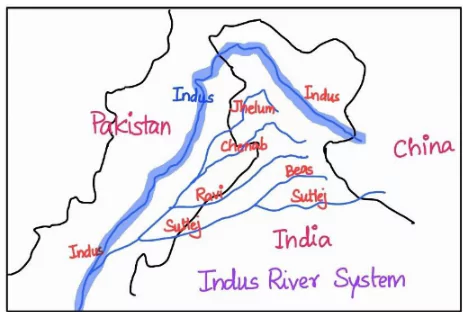![]() May 4, 2024
May 4, 2024
![]() 16556
16556
![]() 0
0
The Indus River, also known as Sindhu, starts from the glaciers near the Kailash Mountain range in Tibet. It flows through India and Pakistan, playing a key role in the region’s geography and culture. With its tributaries, it nourishes vast areas, including Leh in India and Karachi in Pakistan.
 In the Tibetan region, it is referred to as ‘Singi Khamban’ or Lion’s mouth.
In the Tibetan region, it is referred to as ‘Singi Khamban’ or Lion’s mouth.
|
Chenab:
Ravi
Beas
Satluj
| Must Read | |
| Current Affairs | Editorial Analysis |
| Upsc Notes | Upsc Blogs |
| NCERT Notes | Free Main Answer Writing |
The Indus River, with its extensive network of tributaries like Jhelum, Chenab, Ravi, Beas, and Satluj, forms a lifeline for millions of people in South Asia. Its journey from the cold Himalayan peaks to the warm Arabian sea highlights the interconnectedness of nature and human civilization in the region.
<div class="new-fform">
</div>
Latest Comments